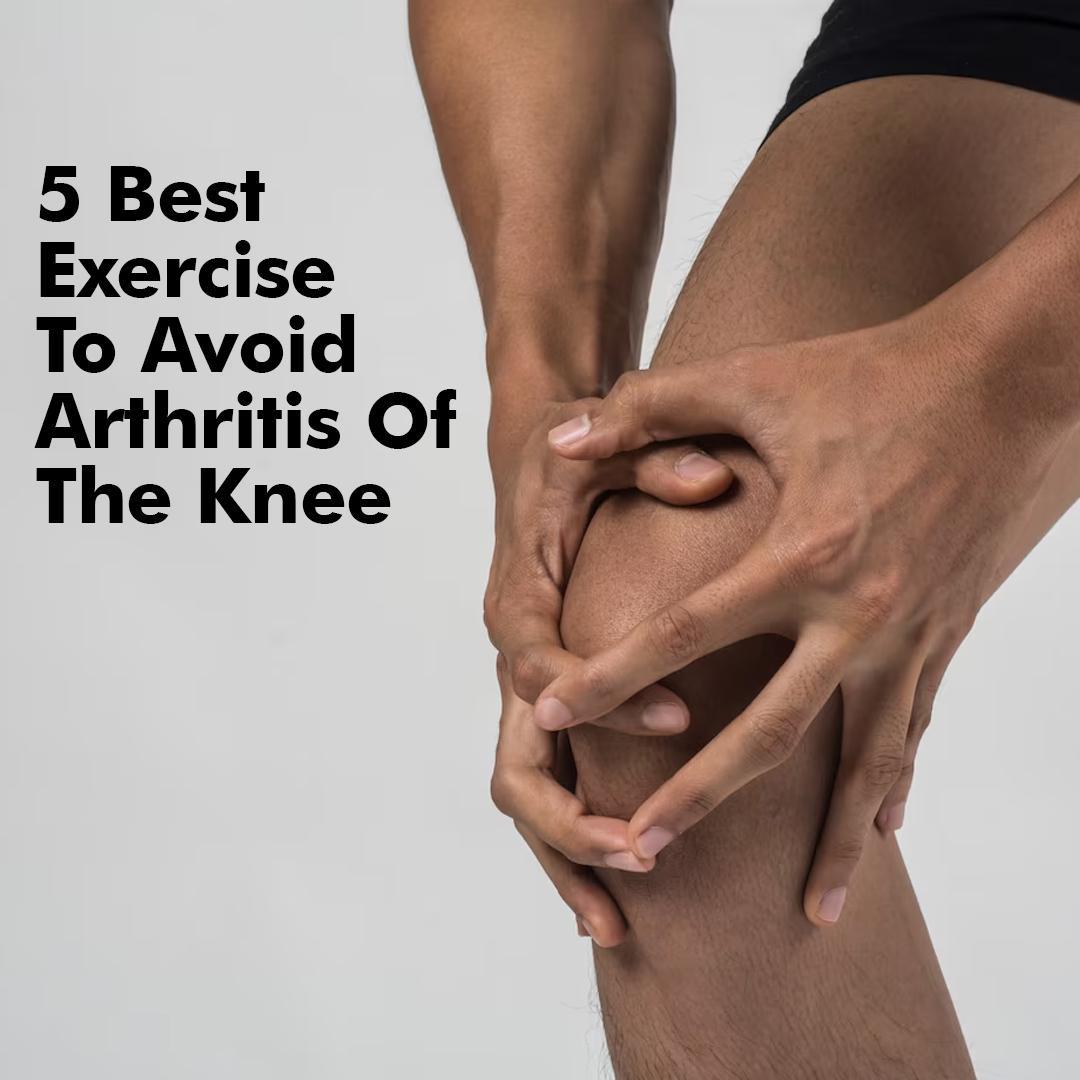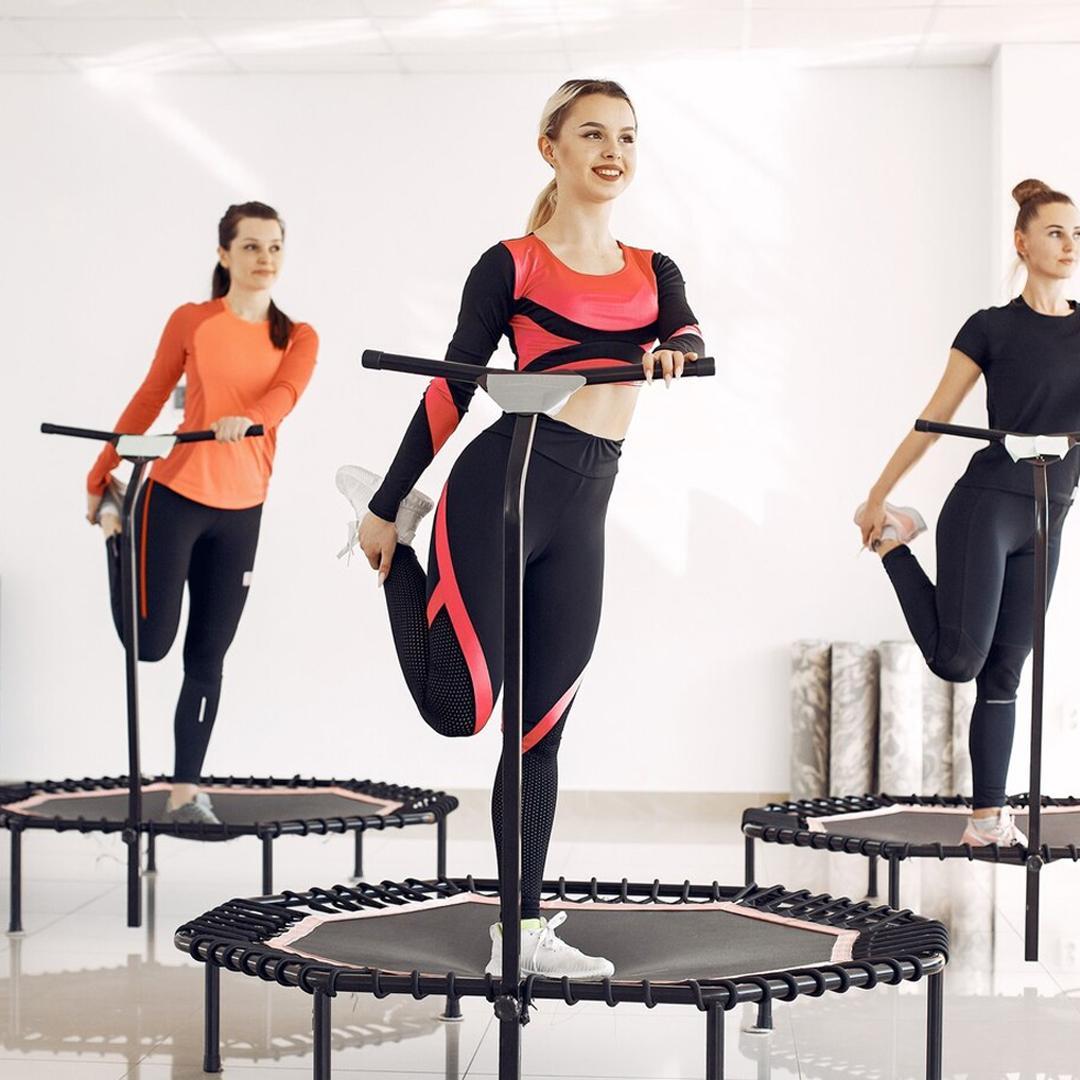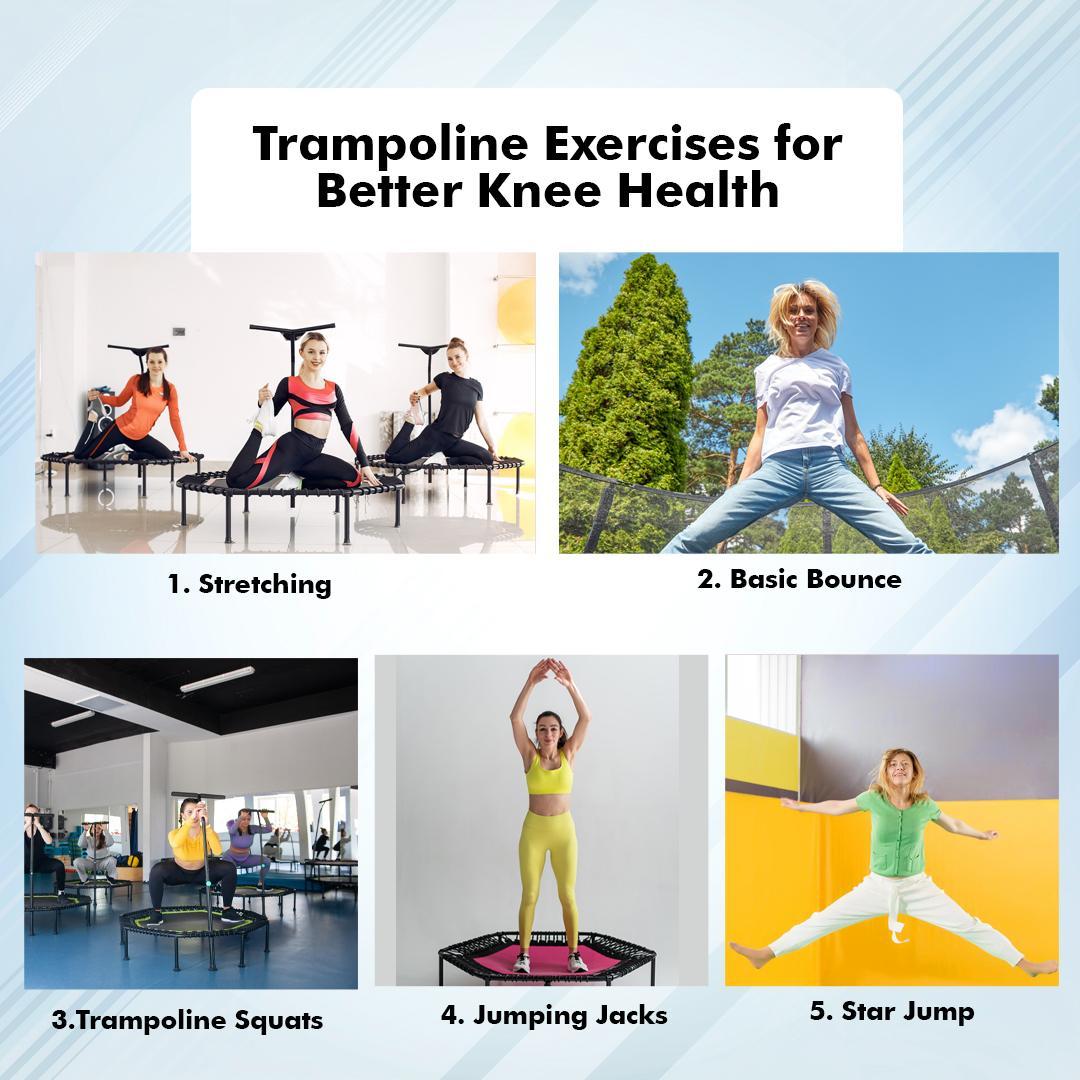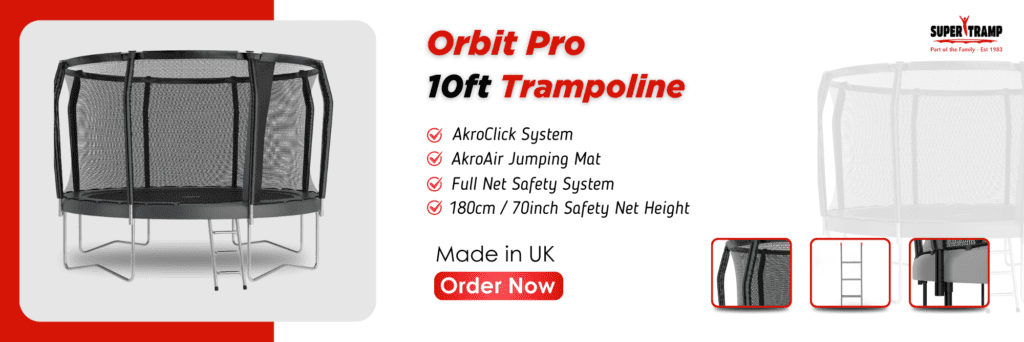After a certain age, arthritis of the knee becomes one of the most common problems people face. Yet, many ignore it until the pain becomes unbearable—leading to sleepless nights and desperate visits to doctors. The truth is, that taking the right precautions at the right time is better than paying those long expensive bills and taking proactive steps can help maintain knee health before the pain sets in.
Table of Contents
Toggle
And if you are looking for fun and effective exercise to avoid arthritis of the knee? Look no further than workout trampolines. Yes, you heard that right – trampolines are not just strong fitness equipment but one of the best exercises to avoid arthritis of the knee. Jumping on a trampoline provides a low-impact workout that can help lessen the chances of arthritis pain and improve mobility in the knees.
Unlike high-impact exercises like running or weightlifting, trampoline jumping reduces the stress on your joints while still providing a great cardiovascular workout. The rhythmic bouncing motion helps to strengthen the muscles around the knee joint, providing extra support and stability.
So, why not bounce your way to better knee health? Discover the wonders of trampolines and see how they can make a real difference in your life.
Understanding Arthritis of the Knee

Arthritis of the knee is a degenerative condition characterized by inflammation of the joints, leading to pain, stiffness, and reduced mobility. This condition affects millions of people worldwide, with osteoarthritis being the most common form. The cartilage that cushions the knee joint gradually wears away, resulting in bones rubbing against each other. This can lead to discomfort during everyday activities, such as walking, climbing stairs, or even sitting for extended periods. Understanding the nature of this condition is essential for those seeking effective management strategies.
Reasons for Knee arthritis
- Knee arthritis can be triggered by various factors, including age, previous injuries, and genetic predisposition.
- As people age, the likelihood of developing osteoarthritis increases, and those with a family history of the condition are also at higher risk.
- Additionally, previous knee injuries, such as fractures or ligament tears, can contribute to the onset of arthritis.
- Recognizing these risk factors can help individuals take proactive steps to maintain their joint health and potentially reduce the severity of symptoms.
Symptoms of knee arthritis
- The symptoms of knee arthritis can vary in intensity and may include swelling, decreased range of motion, and increased pain during movement.
- These symptoms can significantly impact an individual’s quality of life, making it challenging to engage in physical activities.
Therefore, finding appropriate exercise for arthritis of the knee that alleviates pain without further stressing the joints is crucial for managing this condition effectively. In this light, trampoline exercises emerge as a promising option for improving knee health while minimizing discomfort. Let’s explore why trampolines are the best exercise for arthritis of the knee.
Why Trampolines Are Ideal exercise to avoid arthritis of the knee

When exercise feels like a chore, it can be challenging to maintain a routine, but the excitement of bouncing on a garden trampoline often leads to longer and more frequent workouts.
- Trampoline exercises present a unique and engaging way to exercise while minimizing joint stress, making them particularly suitable for even seniors.
- The low-impact nature of bouncing on a trampoline reduces the risk of injury and joint strain compared to traditional high-impact activities like running.
- The elastic surface of the trampoline absorbs much of the impact, allowing individuals to perform movements that would typically be too painful on solid ground.
- Moreover, trampoline exercise to avoid arthritis of the knee promotes gentle, rhythmic motion that encourages mobility without overwhelming the joints.
- The act of bouncing not only helps to strengthen muscles around the knee but also enhances proprioception, or the body’s ability to sense its position in space.
- This improved awareness can lead to better balance and coordination, which are vital for preventing falls and further injuries.
In addition to physical benefits, trampolining offers a fun way to stay active. The playful nature of jumping can lift spirits and motivate individuals to engage in regular exercise. This combination of enjoyment and low-impact movement makes round trampolines an ideal choice for those seeking to improve their knee health while having fun.
Now that you understand why trampolines are an ideal exercise for arthritis of the knee, it’s equally important to prioritise safety to ensure a comfortable and injury-free experience.
Safety Precautions When Using Trampolines for Exercise

While trampolining can provide numerous benefits, safety should always be a priority.
- Before starting trampoline exercises, it is essential to choose the best trampoline with adequate safety features, such as padded edges and a sturdy frame.
- Additionally, ensuring that the trampoline is placed on a flat, soft surface can help minimize the risk of injury in case of a fall.
- Practising proper technique while jumping is essential for safety. Individuals should focus on landing softly and maintaining a controlled bounce to reduce the impact on the knees.
- Consider using trampoline socks to avoid slipping and to bounce safely.
- Starting slowly and gradually increasing the intensity of the workout can help the body adapt to the movements without overstressing the joints. Incorporating a warm-up and cool-down routine, including gentle stretches, can also enhance safety and reduce the risk of injury.
With safety measures in place, you’re ready to take the next step—let’s explore how to start trampoline exercises specifically tailored to manage arthritis of the knee effectively.
Trampoline Exercises for Better Knee Health

Strong and flexible knees are essential for movement, and trampoline exercises can help improve knee stability, strengthen supporting muscles, and reduce joint stress. The low-impact nature of trampolining makes it a great option for those looking to build knee strength without putting excessive pressure on the joints. Below are some effective trampoline exercises to enhance knee health.
1. Stretching
Before jumping in, take a few minutes to stretch. This improves flexibility, reduces stiffness, and helps prevent injuries.
- Quad Stretch: Stand on one leg, pull your other foot towards your glutes, and hold for 15–20 seconds. Switch sides.
- Hamstring Stretch: Sit on the 10ft trampoline, extend one leg straight, and reach for your toes while keeping your back straight. Hold for 20 seconds.
- Calf Stretch: Stand with one foot forward and the other extended back, pressing your heel down. Hold for 15 seconds per side.
2. Basic Bounce
A simple bounce strengthens knee-supporting muscles while keeping impact low.
- Place your feet hip-width apart and bend your knees slightly.
- Gently push off the trampoline, keeping your feet close to the surface.
- Land softly, engaging your core and keeping your movements controlled.
- Continue for 1–2 minutes to activate your knee joints and surrounding muscles.
3. Trampoline Squats
Squats on a rectangular trampoline engage stabilising muscles and improve knee flexibility.
- Stand with feet slightly wider than shoulder-width apart.
- Lower into a squat position by bending your knees while keeping your back straight.
- Resuming your upright position, push through your help.
- Repeat for 10–15 reps, focusing on smooth, controlled movements.
4. Jumping Jacks
Jumping jacks improve joint mobility and coordination while maintaining a low-impact bounce.
- Start with feet together and hands at your sides.
- Jump, spreading your legs shoulder-width apart while raising your arms overhead.
- Return to the starting position and repeat for 30–45 seconds.
- Keep the bounce light to minimise knee strain.
5. Star Jump
Star jumps are excellent for strengthening the muscles around the knees while enhancing agility.
- Stand with feet together and knees slightly bent.
- Jump explosively, spreading your arms and legs wide to form a star shape.
- To cushion the impact, gently land with your knees bent slightly.
- Perform 8–12 reps, focusing on controlled landings.
Incorporating these trampoline exercises into your routine can significantly improve knee health. However, to get the most out of your workouts, it’s important to follow certain best practices. In the next section, we’ll explore tips for maximising the benefits of trampoline exercises to help you achieve the best results.
Tips for Maximizing the Benefits of Trampoline Exercises

To get the most out of 12ft trampoline exercises, individuals should consider several strategies that can enhance their workouts.
- First, establishing a consistent routine can help ensure regular engagement in trampoline activities.
- Setting aside specific days and times for trampoline workouts can create a sense of accountability and encourage adherence to the exercise plan.
- Incorporating a variety of movements can also help maximize the benefits of trampoline exercises.
- Individuals can experiment with different types of bouncing, such as bouncing on one leg or performing turns and twists. Adding in movements that target the upper body, like reaching or swinging arms, can enhance the workout’s overall effectiveness.
- This variety can help prevent boredom and keep individuals engaged while also promoting better overall fitness.
This holistic approach can lead to a well-rounded fitness regimen that addresses various aspects of physical health, ultimately contributing to improved mobility and reduced arthritis symptoms.
Final Thoughts
In conclusion, trampolines offer a unique and effective exercise option for individuals who don’t want to deal with arthritis of the knee. The low-impact nature of bouncing provides a fun way to stay active while minimizing stress on the joints. From strengthening the muscles surrounding the knee to improving mood and cardiovascular health, the benefits of trampoline exercises are extensive. As individuals incorporate trampoline workouts into their routines, they may experience not only physical improvements but also enhanced mental well-being.
However, safety should always be a priority. By taking necessary precautions and consulting with healthcare professionals, individuals can enjoy the benefits of trampolining while keeping their safety in mind. Starting slowly, focusing on proper technique, and being mindful of one’s body are essential steps to ensure a positive experience.
Ultimately, the joy of jumping on a trampoline can reinvigorate one’s approach to fitness and arthritis management. With the right mindset and commitment, individuals can bounce their way to better knee health, reclaiming the joy of movement and enriching their lives.
FAQ's
How to avoid arthritis in the knee?
Trampolining is a great low-impact exercise that strengthens knee-supporting muscles and improves joint mobility, reducing the risk of arthritis.
How do I make my knees stronger?
Strengthen your knees by doing low-impact exercises like trampolining, swimming, and cycling, along with stretching and strength training.
What exercise is not good for knee arthritis?
High-impact exercises like running, deep lunges, and heavy weightlifting can worsen knee arthritis by increasing joint stress.
What is the best thing for arthritis in the knee?
Regular movement, weight management, and a balanced diet help manage arthritis, along with low-impact exercises like trampolining and swimming.
What are 5 vegetables to avoid for arthritis?
Some vegetables, like tomatoes, eggplants, potatoes, peppers, and spinach, may trigger inflammation in some people with arthritis.





